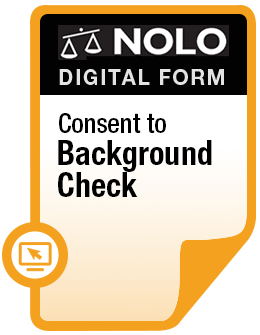Large employers must provide health insurance or face penalties from the IRS.
The Patient Protection and Affordable Care Act—also known simply as the Affordable Care Act (ACA) or Obamacare—has many moving parts.
The law has a number of requirements for health insurance plans, including coverage of preventive care, preexisting conditions, and adult children; restrictions on lifetime and annual coverage limits; and more.
The law also imposes penalties on certain employers that fail to provide health care coverage. We discuss this rule, called the "employer mandate," below.
In 2017 Congress passed the Tax Cuts and Jobs Act, which effectively eliminated the ACA's individual mandate by lowering the federal tax penalty to $0. (Some states, including Massachusetts and New Jersey, impose their own penalties for failure to maintain health insurance.) But to the surprise of many, Congress left the remainder of the federal health care law intact.
Providing Health Insurance Under the ACA
The Affordable Care Act is a federal law that imposes a penalty on larger employers that do not offer health insurance to their employees. This is sometimes called the "pay or play" penalty or the "employer shared responsibility payment."
Covered Employers
The ACA applies to employers with 50 or more full-time employees, or the equivalent in part-time employees, during each month of the previous year. For purposes of the ACA, a full-time employee is someone who works an average of 30 hours per week (or 130 hours per month). To come up with a figure for full-time equivalent (FTE) employees, employers must add up all of the hours worked in a month by those who are not full-time employees, and then divide that number by 120.
Example: Suppose you have 20 employees who work 40 hours per week, 20 employees who work 32 hours per week, and 20 employees who work 15 hours per week (or 65 hours per month). Your company's first 40 employees are considered full-time employees because they work at least 30 hours per week. The part-time employees work 1300 hours per month (20 x 65), which divided by 120, is 10.8 full-time equivalents. You would add this to the 40 full-time employees, for a total of 50.8, which is rounded down to 50. Your company would be covered by the ACA.
The above example assumes that your employees and their hours remain steady from month to month. If these numbers vary, there are a couple of different ways to do the calculation. If your situation is complex, or your company is very close to the 50 number, you should consult with a lawyer or tax professional to determine whether your company is covered.
Health Coverage Requirements
Employers covered by the ACA, sometimes referred to as "applicable large employers" or ALEs, must provide health insurance to 95% of their full-time employees (and their dependents) or pay a penalty. Note that even though FTE employees are counted toward an employer's total for purposes of determining whether the employer is covered, only employees who work at least 30 hours a week are entitled to coverage.
The health insurance must also meet minimum standards of coverage and affordability:
- Minimum value. A health plan qualifies as providing minimum value if it pays for at least 60% of the total allowed cost of covered health care expenses.
- Affordability. The health plan offered cannot require an employee to contribute more than 9.78% of his or her household income for self-coverage. (This figure is for the 2020 plan year; it's updated each year by the IRS.) To determine an employee's household income, an employer may use the employee's W-2 wages, the employee's rate of pay, or the federal poverty line.
Under the ACA, a dependent is an employee's biological or adopted child who is under 26 years old. Spouses are not considered dependents.
ACA Employer Penalty
ACA penalties only kick in if the employer fails to meet the coverage requirements and at least one full-time employee receives the premium tax credit for securing individual coverage through the Health Insurance Marketplace. The ACA provides for two types of penalties: one for failing to provide coverage to at least 95% of their full-time employees, and one for failing to meet the minimum requirements for coverage.
Penalty for Failure to Provide Health Coverage
An employer that doesn't provide health insurance coverage to virtually all (at least 95%) of its full-time employees is subject to a penalty, as long as one of its employees received the premium tax credit for purchasing coverage through the Marketplace. Coverage must also be available for the employee's dependents, defined as children under the age of 26. Spouses are not considered dependents for purposes of the employer mandate.
The penalty amount can be quite hefty: For the 2022 tax year, it's $2,750 for each full-time employee that the employer has, excluding the first 30 employees. For example, if an employer has 60 full-time employees, the first 30 full-time employees are "free," but the employer will still owe a penalty of $82,500 ($2,750 x 30 employees).
Penalty for Providing Inadequate Health Coverage
A potentially smaller penalty applies if the employer does offer health coverage to 95% of its full-time employees, but at least one employee received the premium tax credit for securing coverage through the Marketplace because:
- the coverage did not meet requirements for affordability, or
- the coverage did not provide the minimum value.
The penalty also applies if an employee receives the premium tax credit for securing coverage through the Marketplace because he or she was in the 5% of employees who did not receive coverage.
For the 2022 tax year, the penalty is $4,120 for each full-time employee who receives the premium tax credit. For example, if only one employee receives the tax credit, the penalty is only $4,120. No matter what, the penalty cannot exceed the penalty for failing to provide health insurance in the first place.
Notice and Reporting Requirements
All employers covered by the Fair Labor Standards Act, which is most employers, must provide employees with a notice of their health coverage options at the time of hire. This includes employers with fewer than 50 full-time employees that are not required to provide health insurance. The Department of Labor has model notices available at its website, one for employers that offer health insurance and one for employers that do not.
Employers with 50 or more full-time employees must also fulfill certain reporting requirements under the ACA. Employers must file Form 1095-C and Form 1094-C with the IRS, which it uses to determine the employer's shared responsibility payment, if any. Employers must also provide a copy of Form 1095-C to all full-time employees. Employers must also report the value of health care coverage on their employees' W-2 forms.
To learn more about this topic in general, see our page on taxes and Obamacare.



